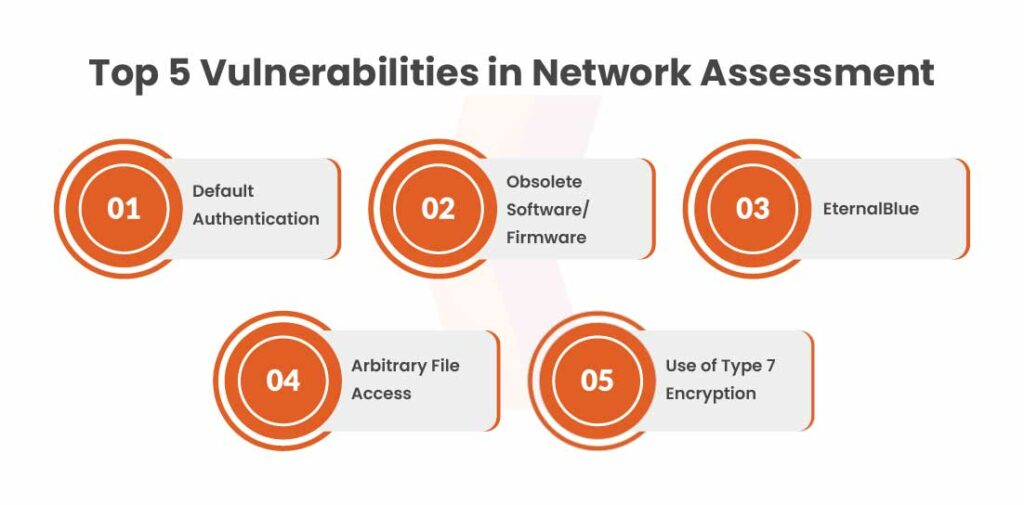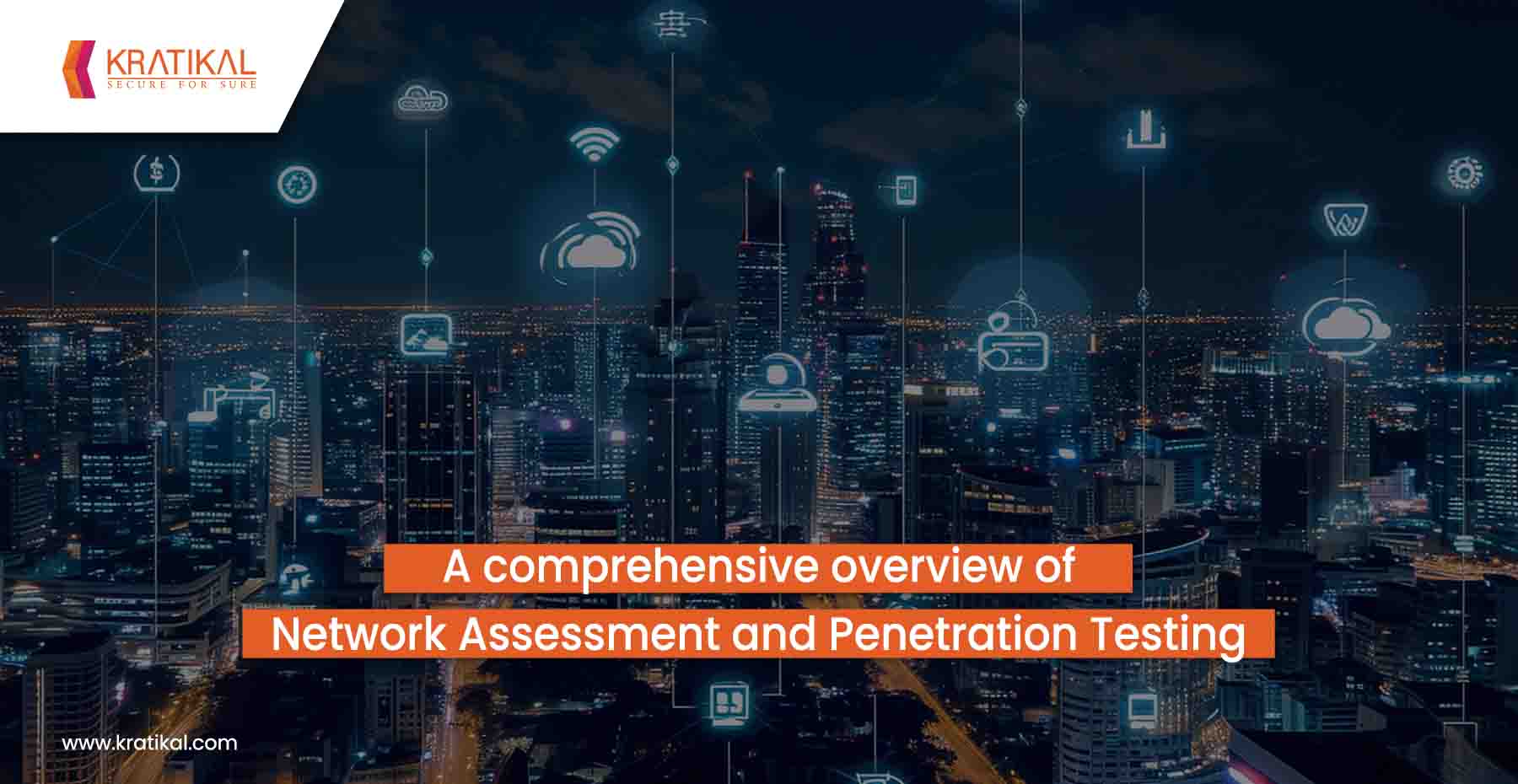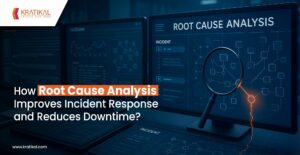Wondering whether or not your organization needs a network assessment? The answer is always “YES”!
Network assessment refers to a detailed analysis of the current state of your company’s existing network infrastructure. It not only protects your company against an array of cyber threats but also helps you make informed business decisions regarding future investments. Network assessment and penetration testing involve an in-depth analysis of the processes, performance, and architecture of all the components of your organization’s network.
Table of Contents
Types of Network Assessment
Network penetration testing can be performed from two different perspectives:
- Outside your organization’s network perimeter
- Inside your organization’s network perimeter
Security teams categorize network assessment into external and internal network vulnerability assessments.
- Internal Network Vulnerability Assessment
An internal network vulnerability assessment is conducted to help determine what malicious actors could do with initial access to your organization’s network. It helps in identifying how easily and freely attackers can laterally move through your network after the occurrence of an external breach. This type of network penetration testing can mirror insider threats like malicious actions performed by employees either intentionally or unintentionally.
- External Network Vulnerability Assessment
An external network vulnerability assessment is carried out to test how effective your network’s perimeter security controls are. It not only helps in preventing and detecting cyber attacks but also identifies weaknesses in your network’s internet-facing assets like mail, web and FTP servers.
This type of network penetration testing aims to detect all weaknesses that attackers could exploit to gain initial access to your organization’s network.
Book Your Free Cybersecurity Consultation Today!
Why Do You Need Network Assessment?
A secure and robust network infrastructure is essential to your company’s cyber security. No matter how many technical controls and security policies you have put in place to secure your network, your organization cannot be deemed safe unless your network security is tested.
While conducting a network assessment for your organization, all the devices connected to its network are thoroughly examined and analyzed. Fixing the flaws or weaknesses detected during the assessment substantially reduces the risk of a successful cyber attack on your organization.
Given the huge financial losses caused by cyber attacks these days, conducting regular network assessment and penetration testing is a very wise and cost-effective measure to avoid losing millions in damages, legal fees and fines. In fact, network assessment can also protect you from compliance breaches, which can lead to heavy fines.
Top 5 Critical Vulnerabilities to Watch Out
There is no shortage of network security issues that can lead to some grave consequences for your organization.

Default Authentication
Enabling default IDs and passwords on the devices connected to your network can be one of the most devastating network vulnerabilities for hackers to exploit to gain access to your network. While trying to breach your network, one of the first things an attacker checks is whether your network has enabled default authentication.
Several websites list the default credentials for a wide range of devices, including routers, phones, printers, servers, etc. Organizations often install devices without changing their administrator password, leaving them accessible to anyone on the network. This can lead to huge data breaches with staggering financial and data losses.
In May 2015, the electronic health records software firm called Medical Informatics Engineering (MIE) suffered a data breach that led to the compromise of 3.9 million Electronic Personal Health Information (ePHI) records. The hackers infiltrated the organization’s network remotely by using easily-guessed credentials. MIE had provided a customer with access to its network using two test accounts, both of which had identical and easy-to-guess usernames and passwords.
Obsolete Software/Firmware
When it comes to network vulnerabilities, outdated software and firmware can serve as the perfect point of attack for malicious actors.
Failure to update your software or firmware on time can expose your organization to the risk of potentially detrimental data breaches and cyber attacks. Neglecting to update outdated software or operating systems has led to several massive cyber attacks on organizations worldwide.
The infamous Equifax data breach of 2017 took place when the company’s IT team ignored the instructions regarding the implementation of a software patch. Counted amongst the biggest data breaches of all times, this security incident led to the exposure of the sensitive personal information of around 146 million Americans.
EternalBlue
Officially named MS17-010, EternalBlue is a deadly exploit that poses a threat to anything that utilizes the SMBv1 (Server Message Block version 1) file-sharing protocol. The United States National Security Agency (NSA) allegedly developed this exploit, and the hacking group Shadow Brokers leaked it in April 2017.
EternalBlue exploits SMBv1 vulnerabilities afflicting the older versions of Microsoft operating systems to launch devastating ransomware attacks. It has cost several high-profile organizations billions of dollars.
Maersk, the largest shipping firm in the world, lost $300 million to this exploit. Similarly, Merck Pharmaceuticals lost $870 million, and the delivery company FedEx lost $400 million. Around a million systems still use the vulnerable SMBv1 protocol, which makes them susceptible to vicious attacks and huge losses.
Arbitrary File Access
Arbitrary file access is a vulnerability that affects how Samba validates file paths presented by an SMB client. This vulnerability allows a user to bypass Samba access restrictions while accessing files by using a specially crafted file path.
Malicious actors can exploit this vulnerability to retrieve files outside a valid share path. An attacker can send a file operation request with a crafted pathname to a target Samba server to gain access to files outside the specified share directory tree.
Effective exploitation of this vulnerability enables attackers to remotely bypass the predetermined share restrictions to gain read, write, and list access to catalogs and records under the client’s privileges. In the cases where a public share is accessible, even unauthenticated attackers can launch the attack.
This vulnerability puts your confidential files and other sensitive data at risk. The failure to detect and rectify this vulnerability at once can put your company in danger of devastating data leaks and breaches.
Use of Type 7 Encryption
While encryption is a necessary practice to ensure data security, choosing the right type of encryptions is just as important. Using Type 7 encryption can prove to be a huge flaw in your network security model.
Type 7 encryption is not a hash but a reversible and weak encryption that aims to protect against shoulder-surfing or prevent an intruder from knowing the password just by looking at the configuration.
Type 7 encryption uses a cipher that scrambles the password such that the displayed text is different from the text you typed. To prevent your sensitive data from falling into the wrong hands, it is highly advisable to forego Type 7 encryption and use stronger encryption methods instead.
With so many network vulnerabilities and security issues threatening to undo all your hard work, the only sensible move is to stay proactive and eliminate these weaknesses as soon as possible.
Get in!
Join our weekly newsletter and stay updated
Conclusion
Network assessment is an essential strategy for securing your organization against evolving cyber threats. Regular network assessments and penetration testing strengthen your security posture, minimize risks, and protect sensitive data from breaches, ensuring compliance and avoiding substantial financial losses.
The critical vulnerabilities discussed—such as default authentication, obsolete software, EternalBlue exploits, arbitrary file access, and Type 7 encryption—highlight the importance of vigilance and timely action. Staying proactive and addressing these weaknesses is key to building a resilient network infrastructure capable of withstanding malicious attacks. Invest in robust security measures today to secure your organization’s future.
FAQs
- What is the difference between a network vulnerability assessment and a penetration test?
Vulnerability assessment and penetration testing are crucial techniques for evaluating the security of a system or network. Vulnerability assessment focuses on identifying possible weaknesses within the system, whereas penetration testing simulates an attack to exploit those identified vulnerabilities.
- What is VAPT in networking?
Vulnerability Assessment and Penetration Testing (VAPT) is a method used to safeguard an organization from both internal and external risks by detecting security vulnerabilities.








Leave a comment
Your email address will not be published. Required fields are marked *